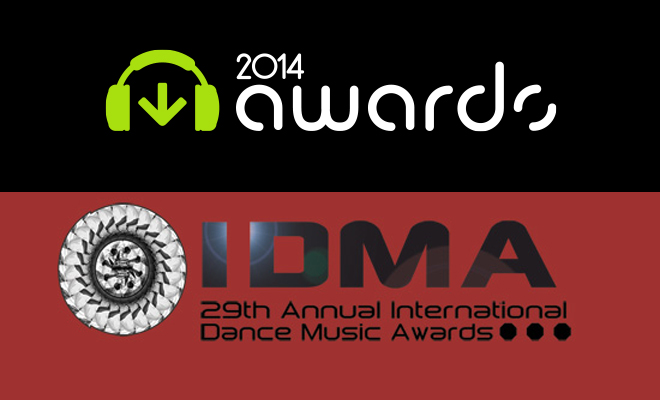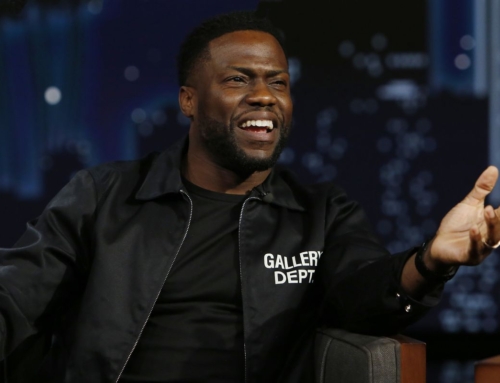For those that don’t know, March is informally the season for dance music awards. Newcomer the Beatport Awards ended its poll at the end of February and announced its winners earlier in the month, and the long-standing International Dance Music Awards (IDMAs) revealed its lineup on March 27 during the 2014 Winter Music Conference.
For casual listeners or those who only pay attention to the Grammy’s, Billboard Music Awards, and any MTV distinction, this time of year is easy to ignore – but should it be? While the Grammys pat themselves on the back for finally including more dance music artists and MTV expanded to include electronic categories over the last two years, the mainstream – as usual – is always a few steps behind.
Here’s what the two biggest dance music award shows get right (and what similar mainstream ceremonies can learn from them):
1. Give the fans and promoters a voice
Remember when Al Walser – a guy whose dance music experience ended with Eurodance group Fun Factory – got a Grammy nomination on a song that had less than 5,000 views on YouTube? That’s what happens when influencers who have no understanding of the genre get a say.
Instead, Beatport has the right idea: get the fans and industry professionals involved.
For those who don’t know how Beatport does its nominations and winners, fans can vote in Community Choice categories for Album, Track, Artist, and Label of the year. While mainstreamers like Avicii, Dimitri Vegas & Like Mike, and Spinnin’ prevailed, at least you know the selection’s coming from a more informed perspective.
Beatport, as well, takes its monetary figures – and not, say, misguided Billboard chart ranks – into account for its Best-Selling Album, Original Track, Remix, DJ Choice, and Compilation. While the top-selling track might not always be the strongest dance music tune, especially where underground listeners are concerned, something from Swedish House Mafia is still more deserving of an award than, say, a Lady Gaga track that happens to be at the top of the Billboard Dance charts.
2. Subgenre Distinctions
What’s worse: Not being nominated at all, or finding out Britney Spears won a dance music award?
For years, the Grammys and similar ceremonies opted for pop stars in the dance music categories. Briefly, toward the early and mid-‘00s, some electronica artists may have ended up in the Grammys’ selection, but this was balanced out by the fact that the Baha Men won for Best Dance Recording in 2000.
Toward the late ‘00s, things started to get better. At points, New Order, the Pet Shop Boys, La Roux, and Goldfrapp were all nominated, but compared to the sounds being put out, the choices appeared too safe. Yes, synthpop briefly had a resurgence in the ‘00s and “Guilt Is a Useless Emotion” involved Jacques Lu Cont, but how could an awards ceremony ignore the fact that house, trance, and dubstep producers were drawing crowds at clubs and festivals?
In a sense, the last Grammys appeared to be an act in electronic dance music repentance. Although the subgenre scope is still narrow, nominations across dance-related song, album, and remix categories encompassed Daft Punk, Zedd, Alesso, Kaskade, Armin Van Buuren, Pretty Lights, Disclosure, Calvin Harris, Brian Eno, Photek, and Sultan & Ned Shepherd.
It’s a start, but the IDMAs particularly put the Grammys to shame. Not only does the ceremony make a distinction between DJs and the tracks produced, categories cover a far greater range and thus include more artists. This goes from Best Underground to Best House/Garage/Deep House track to Best European DJ, and in the past has included such categories as Best Hi-NRG song.
For the Beatport Awards, the range of subgenres represented by the Community Choice nominations reflects fans’ choices as well, indicating that EDM isn’t just one mass culture. “For Beatport to be the North Pole of authenticity, we have to honor what’s best,” said Beatport’s creative director Clark Warner to the press this year, “But dance music is unlike anything else. There’s a very tribal aspect to the fan base, and we have to represent that as well.”
3. It’s Not Just About the Music
EDM culture is a multi-faceted thing. To the U.S. mainstream music scene, it’s about big festivals with visuals, pop house tracks, the occasional wub-wub-wub of a Skrillex song, neon attire on hot coeds, and poppin’ molly.
But dance music culture, from the underground to the mainstream, from clubs to global festivals, from the actual tracks to the gear used to produce or DJ, is far more diverse, and the IDMAs acknowledge this, especially what goes on behind the scenes.
When we attended the IDMAs last year, awards were given to labels (separated into Global and American categories), promoters, gear developers, marketers, for apps and radio shows, retailers, and clubs (again, in Global and U.S. categories). As the gear used, the music being created, the DJs playing the tracks, and the promoters and clubs bringing in fans all symbiotically work together, with all parts crucial in the scene, it’s only fair to acknowledge all parties that have helped push and develop dance music, either within the culture itself or toward the mainstream.





